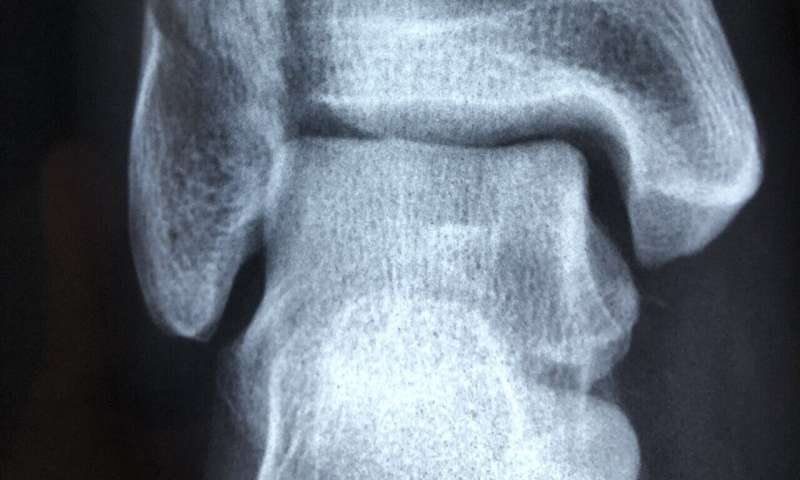Study shows genetic markers are useful in predicting osteoporotic fracture risk

A new study shows that genetic pre-screening could reduce the number of screening tests needed to identify individuals at risk for osteoporotic fractures. Douglas P. Kiel, M.D., M.P.H., director of the Musculoskeletal Research Center in the Hinda and Arthur Marcus Institute for Aging Research at Hebrew SeniorLife, is an author on the report published this month in PLOS (Public Library of Science) Medicine.
Osteoporosis is a common and costly condition that increases the risk for bone fractures in those with the disease. Fractures, which lead to significant morbidity, mortality and expense, are a large public health concern. Annual costs associated with fractures exceed $19 billion in the United States.
Dual-energy X-ray absorptiometry (DXA), which measures bone mineral density (BMD), has been considered the clinical standard for determining fracture risk, along with the Fracture Risk Assessment Tool (FRAX). A FRAX assessment considers factors such as age, gender, weight, alcohol use, smoking history, and fracture history. Screening programs are generally designed to identify those whose risk is great enough to require intervention. However, assessment takes time and DXA accessibility has declined. Usually only a small proportion of individuals who undergo screening is found to be at high risk, indicating that much of the screening expenditure is spent on individuals who will not qualify for treatment.
The potential exists to improve the efficiency of osteoporosis screening programs using genetic markers to assess fracture risk. The purpose of this study was to understand if genetic pre-screening could reduce the number of screening tests needed to identify individuals at risk of osteoporotic fractures. It used genetic data from more than 300,000 participants from the UK Biobank to calculate the genetically predicted bone ultrasound measure. This was then compared with the commonly used FRAX score and standard BMD measured by DXA as to its ability to predict the risk for fracture.
By building a polygenic risk score and validating its utility in fracture risk screening in five separate cohorts totaling more than 10,000 individuals, study researchers determined that genomics-enabled fracture risk screening could reduce the proportion of people who require BMD-based testing by 41 percent, while maintaining a high ability to correctly determine appropriate treatment for those at risk. While these findings are not meant to be prescriptive, they indicate the possible utility of polygenic risk scores in screening programs that are dependent on heritable risk factors.
"Someday everyone will know their genetic predispositions to various diseases and traits because genetic typing has become so inexpensive," said Dr. Kiel. "When available, these genetic markers can be used to predict diseases to help health care providers screen and treat patients tailored to their genetic predisposition to a given disease. Using genetic risk scores to guide screening for osteoporosis may result in disease screening strategies that are more thoughtful and personalized than the one-size-fits-all approach currently in place within medical practice."
More information: Vincenzo Forgetta et al, Development of a polygenic risk score to improve screening for fracture risk: A genetic risk prediction study, PLOS Medicine (2020). DOI: 10.1371/journal.pmed.1003152

















